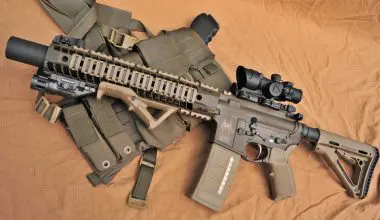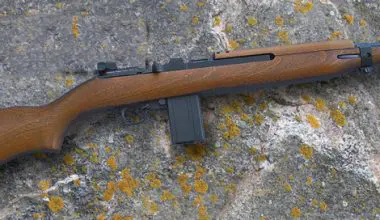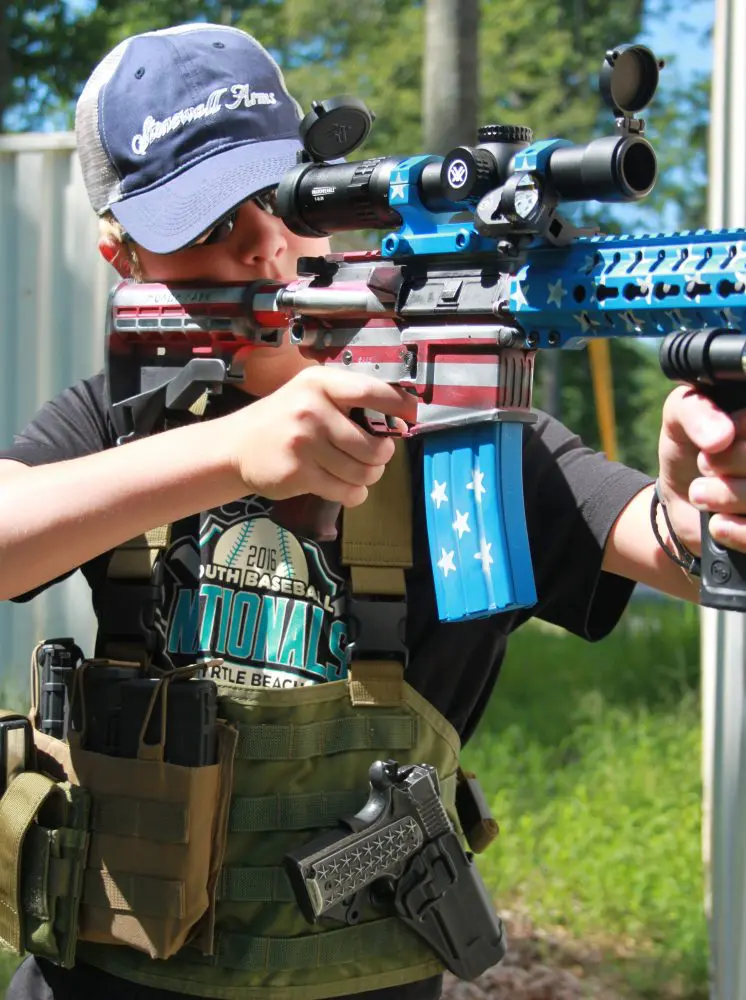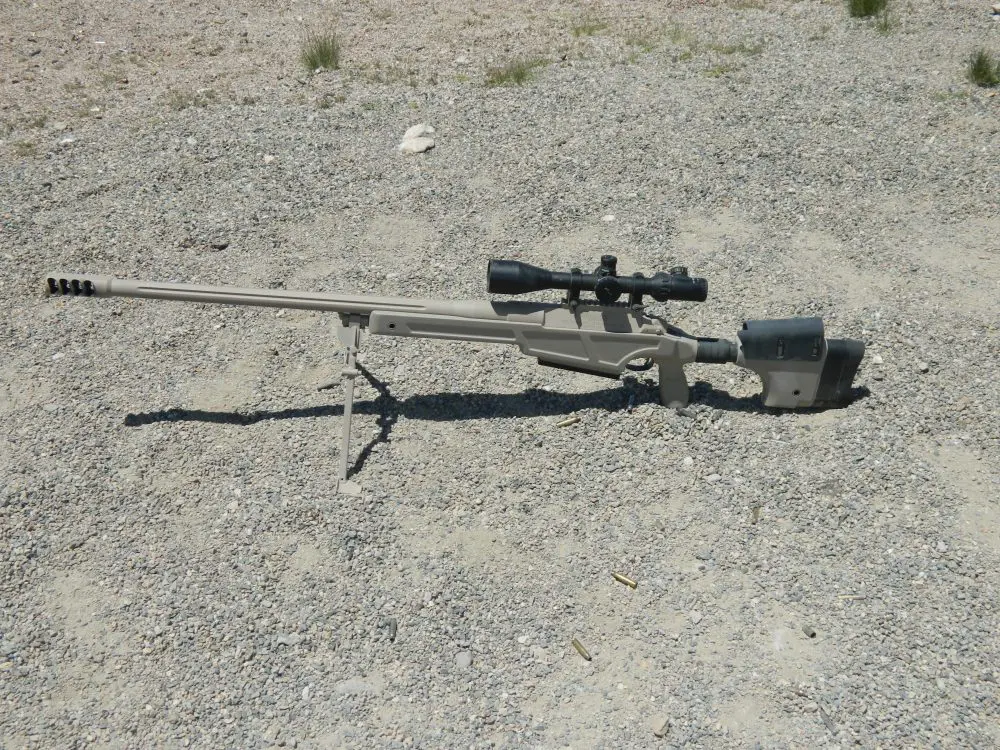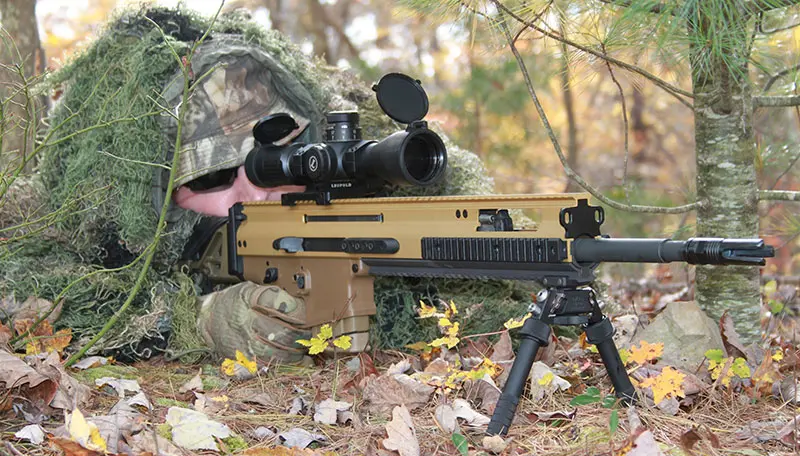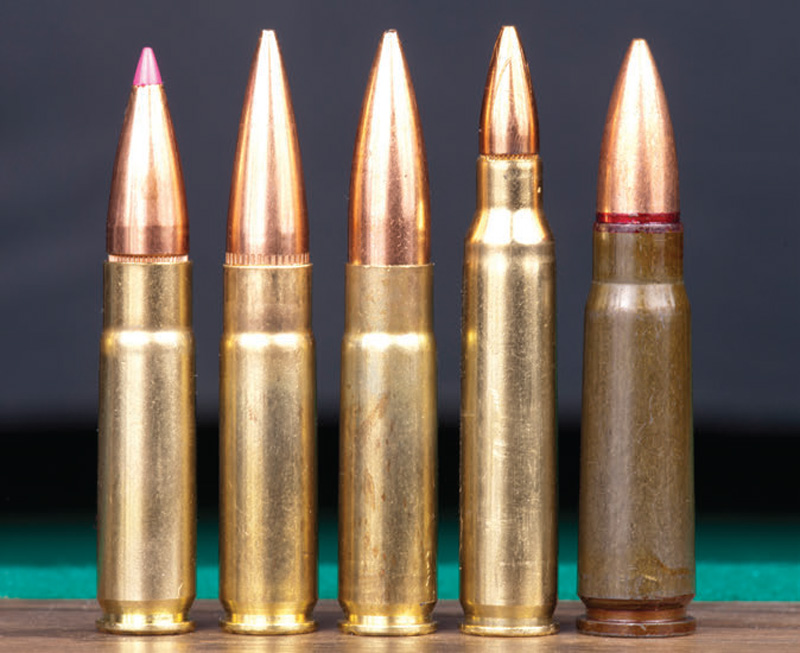
Agood deal of research has been conducted by the military and law enforcement to identify a caliber that will eclipse the performance of the 5.56x45mm round and can be readily and cost effectively adopted to the current AR-15/M16 platform.
The two early candidates for these requirements, the 6.8mm and the 6.5mm Grendel, appear to have been dropped because of high transition costs and extensive retooling of the platform now in service and its feed system.
Nevertheless, even with a series of 5.56x45mm improvements, the quest for a replacement to ours and NATO’s rifle caliber continues, and that persistence seems to have paid off.
Table of Contents
MAYBE THE Soviets WERE RIGHT
We have now come full circle and are revisiting .30 calibers. I hate to admit it, but maybe the Soviets had it right after all.
Even though the Soviets followed our lead and developed their own .22 (5.45x39mm), many Spetsnaz still preferred the 7.62x39mm because of what some commandos perceived as the ineffectiveness of their small-bore round, plus the fact that the mujahideen were wedded to the thirty and the Kremlin’s soldiers could use captured ammunition.
.300 AAC BLACKOUT
The new round started life in 2009 as the subsonic .300 Whisper. SSK Industries’ Mr. J.D. Jones was its parent. A few years ago, in response to a military request to be able to launch .30-caliber projectiles from a Mk 4 carbine platform that was also compatible with existing bolts and magazines, the Advanced Armament Corporation (AAC) developed the .300 Blackout.
Save your 5.56x45mm brass or acquire .221 Fireball cases and you will be able to neck it up to .30 caliber, where a plethora of bullet designs and weights are available for customization.
There is a wide selection of bullet weights and, depending on your mission, you can select supersonic loads in 110, 115, 125, 140, 147, 155, 170 and 180 grains, and subsonic suppressororiented rounds in 200, 208 and 220 grains. Felt recoil is not much of an issue. The high-velocity stuff is AK like and the heavyweights feel quite soft in the shoulder.
SUBSONIC RELIABILITY
AR reliability with subsonic loads without a suppressor in place or a variable gas port differs from gun make to gun make. All heavy weights had to be manually cycled to chamber a fresh round after spent brass exited the direct gas impingement in a Doublestar Constant Carry Carbine (C3).
Conversely, all supersonic rounds functioned flawlessly in this six-pound, HBAR 1:8 twist barreled weapon topped with a Carlson RASP flash hider. But the C3 quickly gains 2.36 pounds and corresponding bulk when fitted with longand short-range optics and charged with 30 rounds of 125-grain ammunition.
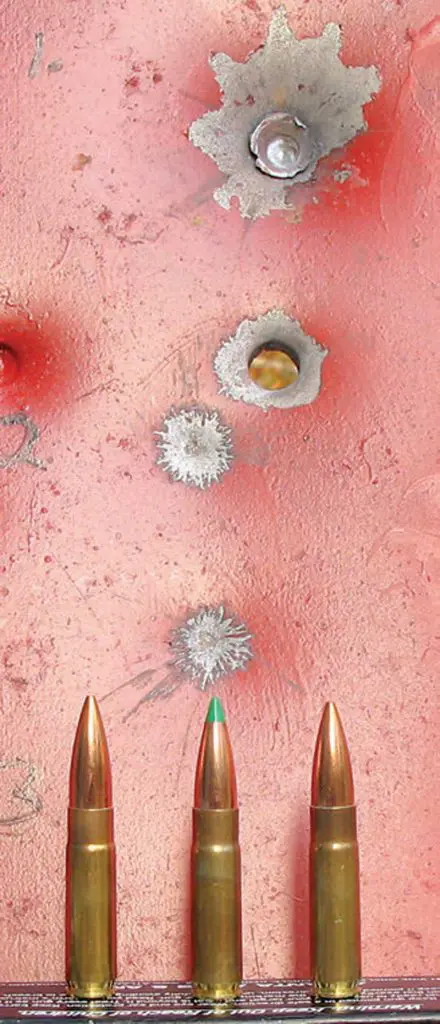
.300 BLACKOUT CAPABILITIES
Maximum effective ranges for the 125- and 220-grain cartridges are 500+ and 200+ yards respectively. Special Operations teams that engage in forced entries and room clearing have been looking for a shoulder weapon that is as compact as a submachine gun but produces carbine-like power.
In nine-inch barreled AR platforms, the 115-grain Blackout will clock 2,000+ feet-per-second (fps) and slap the threat with over 1,000 foot pounds of muzzle energy, which a similar 5.56mm platform cannot match.
TRIJICON’S AUGMENTATION
William Taggart, Trijicon’s Vice President of Military and Law Enforcement sales, kindly loaned me what I consider one of the best ACOGs for AR-15 platforms. The compact 2X green reticle TA47-4 scope has been an ideal accessory for several of my 5.56x45mm T&Es and worked as well with the C3.
For close quarter work, it was augmented by the company’s 1X RMR 07 red dot sight, which took up residence on the starboard side of the ACOG and only requires a slight inboard cant to access.
VELOCITIES AND ACCURACIES
Five different manufacturers provided ten of their loads for evaluation in the C3. Barnes 110-grain VOR-TX TAC-TX ammunition delivered the highest individual velocity of 2,370 fps and 1,372 foot pounds of muzzle energy (fpme). Remington 125-grain ACCUTIP at 2,280 fps delivered the most muzzle energy at 1,443 fpme.
Based on various reports, I had high expectations for this cartridge, but the lightweight carbine, primarily designed for enhanced mobility, delivered mixed 100-yard results. The tightest threeround 100-yard group of 0.97 inch was generated by PNW’s 220-grain subsonic load. It was also the slowest round in the mix at 990.6 feet per second and generated handgun-like muzzle energy of only 479 foot pounds.
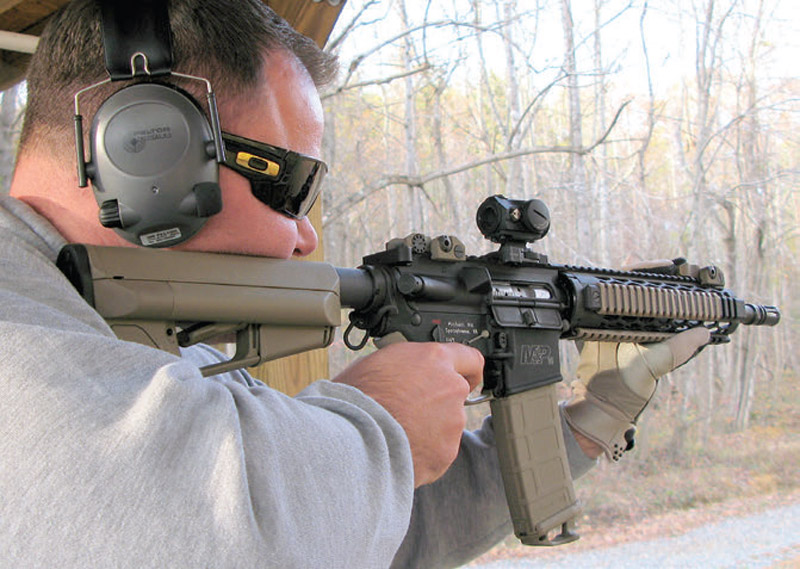
MUZZLE BLAST AND FLASH
Two of the big objections to short-barreled ARs, particularly of the 5.56 persuasion, are muzzle blast and noise. Muzzle compensators help shooters with fast target acquisition while engaging close quarter and fleeing threats, but often slap room-clearing partners with concussive over-pressures and vision- punishing muzzle flash.
Noise and light sensitivity are individual matters, and when I worked with Sergeant Giles Stock and his Phoenix PD SWAT team during my 5.56 close quarter battle (CQB) project, his team was employing Steyr AUG Bullpups that handled like submachine guns but really hammered felons and often resolved problems with a single round.
I interviewed one of the team members who happened to be a female. She advised that under stress, whether it’s training or operational, she no longer notices the fireworks emanating from her Steyr’s muzzle, and it doesn’t distract her.
In the shoot house, we put one of our agents inside a stall in the bathroom and fired a 9x19mm MP5 SMG, 14-inch barreled 12-gauge shotgun, and AR-15 5.56x45mm carbine. Hands down, the shotgun rocked the agent like no other weapon we fired.
Without protective ears, I stood to the rear of the shooting point and listened to the .300 Blackout’s muzzle signature. As we moved from the heavy subsonic loads to the lightest supersonic loads, muzzle blast (noise) increased, but did not eclipse that of 5.56mm rounds.
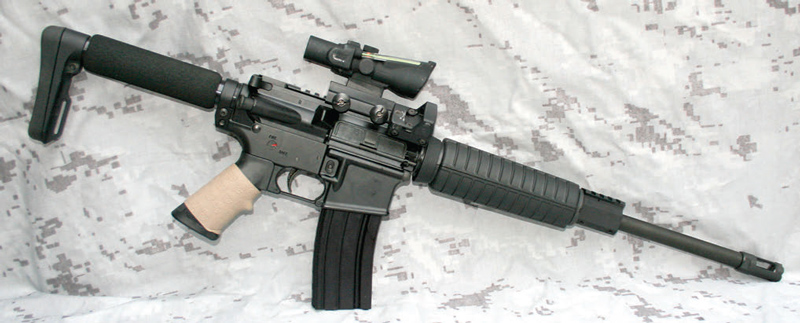
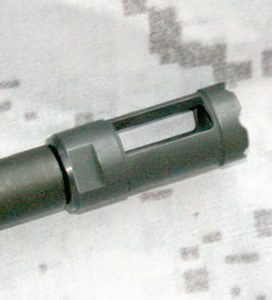
PENETRATION
The .300 Blackout is touted to provide the soldier with better hard target penetration than the 5.56x45mm.
At close range, I banged away at a 5mm steel plate with the Doublestar C3. PNW 220-grain SS HPBT merely scratched the paint with a slight dimple. The same company’s 155-grain Match HPBT gouged it deeply but did not make it through.
However, Atlanta Arms 125-grain Nosler BT punched through cleanly and lodged deeply in the telephone pole backing behind it.
It appears that 2,000 fps is the threshold that must be crossed for defeating steel plate with the .300 Blackout. And while some 5.56x45mm rounds are capable of perforating a similar obstacle, in most cases the round disintegrates and peppers the enemy only with fragments.
CUSTOM CLASS III CARBINE
I was joined by shooting companion and budding custom gunsmith Mike Nix, who put a variety of .300 Blackout rounds through his personally built 12.5-inch barreled Class III carbine. It is a beautiful example of how the AR platform can be executed when mated with first-class internals and components. With its Syrac Ordnance adjustable gas block, it devoured every bullet weight we had, including the subsonic rounds.
Compared to the 16-inch C3, it lost an average of 130 fps when launching the Barnes 110-grain load. However, this more compact weapon comes very close to the energy level of 1,250 fpme that is generated by a 55-grain 5.56x45mm bullet exiting a 20-inch barreled M16 rifle barrel at 3,200 fps.
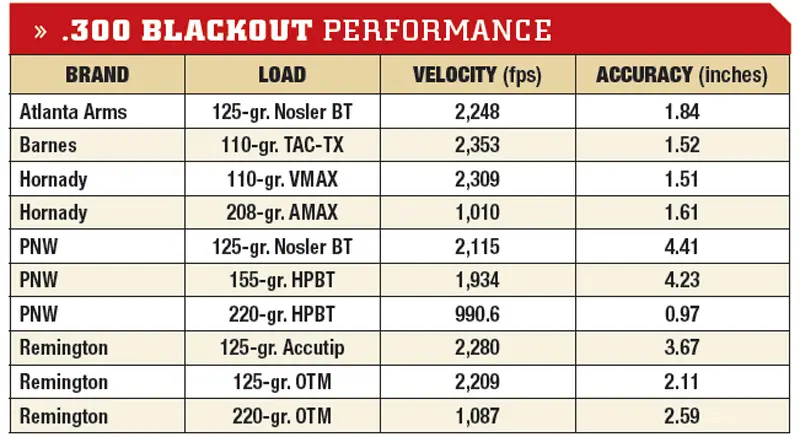
CHINESE/RUSSIAN FRUSTRATIONS
In concert with their overall growth in military power, the Chinese People’s Liberation Army, like the Russians, have developed a new sub .30-caliber assault rifle in 5.8x42mm that has better numbers than our 5.56x45mm. But we must be sending them and the Russians to the ballistic funny farm with our dalliances with various 6mm calibers and now our potential return to a .30-caliber cartridge.
Many countries and even our enemies often rely on American testing and evaluation in order to make small arms decisions. Everyone wants a rifle that is equal or superior to the one being humped by their opposition. “What do the Americans know that we don’t know?” the followers of Mao and Stalin must be saying. “Here we go again.”
CONCLUSIONS
I am impressed with the .300 Blackout and believe it has a good chance to be a contender in the assault rifle caliber competition. I also believe that with a heavier and more solid platform, accuracy results would have been better and more consistent.
The Doublestar C3 is no slouch in putting rounds on target and fills the gap between submachine guns and assault rifles. It trades some ruggedness for portability, but performs the latter task very well.
With the addition of a bayonet lug, the C3 could be an ideal package for military personnel who are ordinarily armed with pistols and need both hands for command and control tasks. With a shorter barrel and in .300 Blackout caliber, it would be handier and more maneuverable, but deliver far more kinetic energy, range and accuracy than any military handgun or personal defense weapon.
